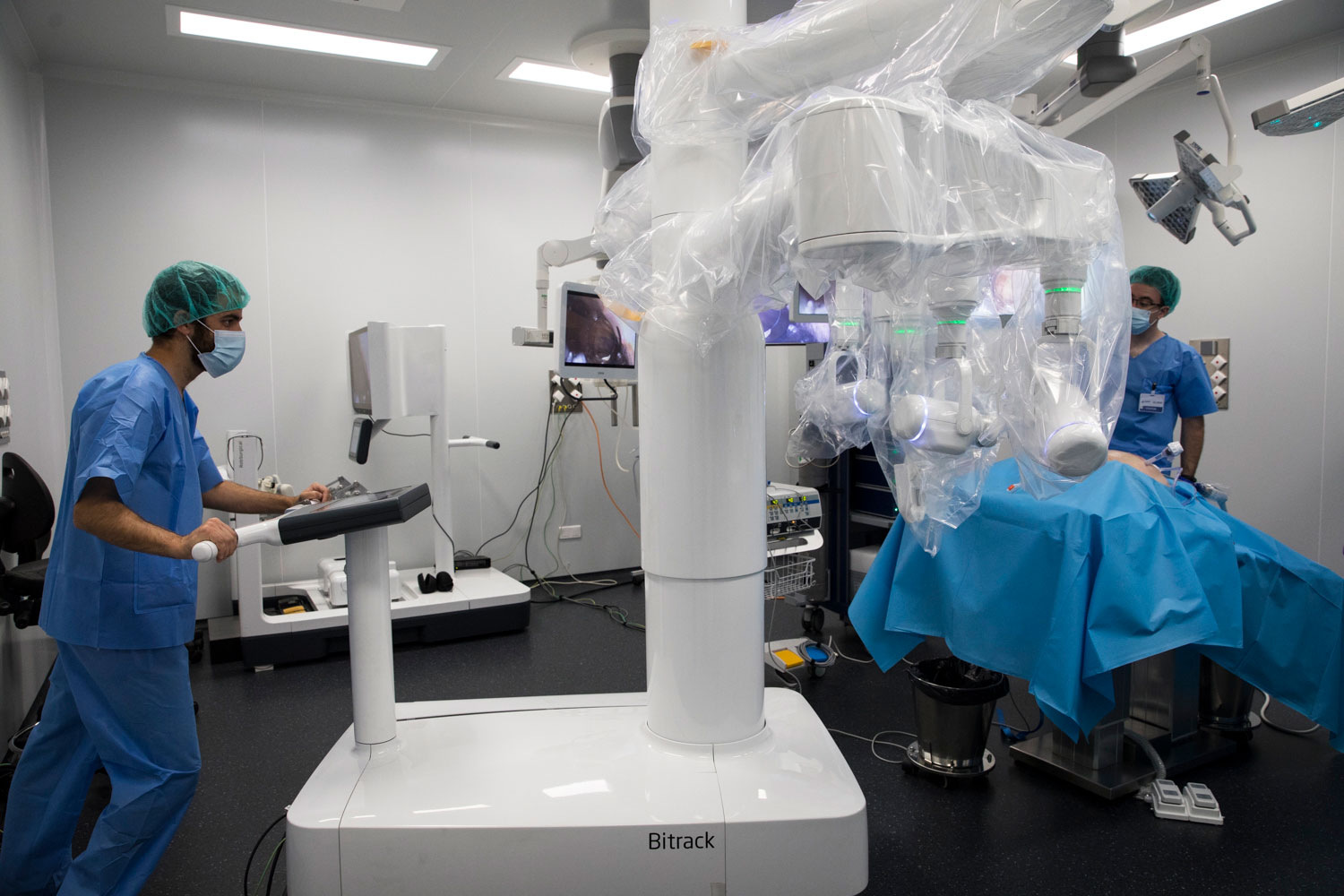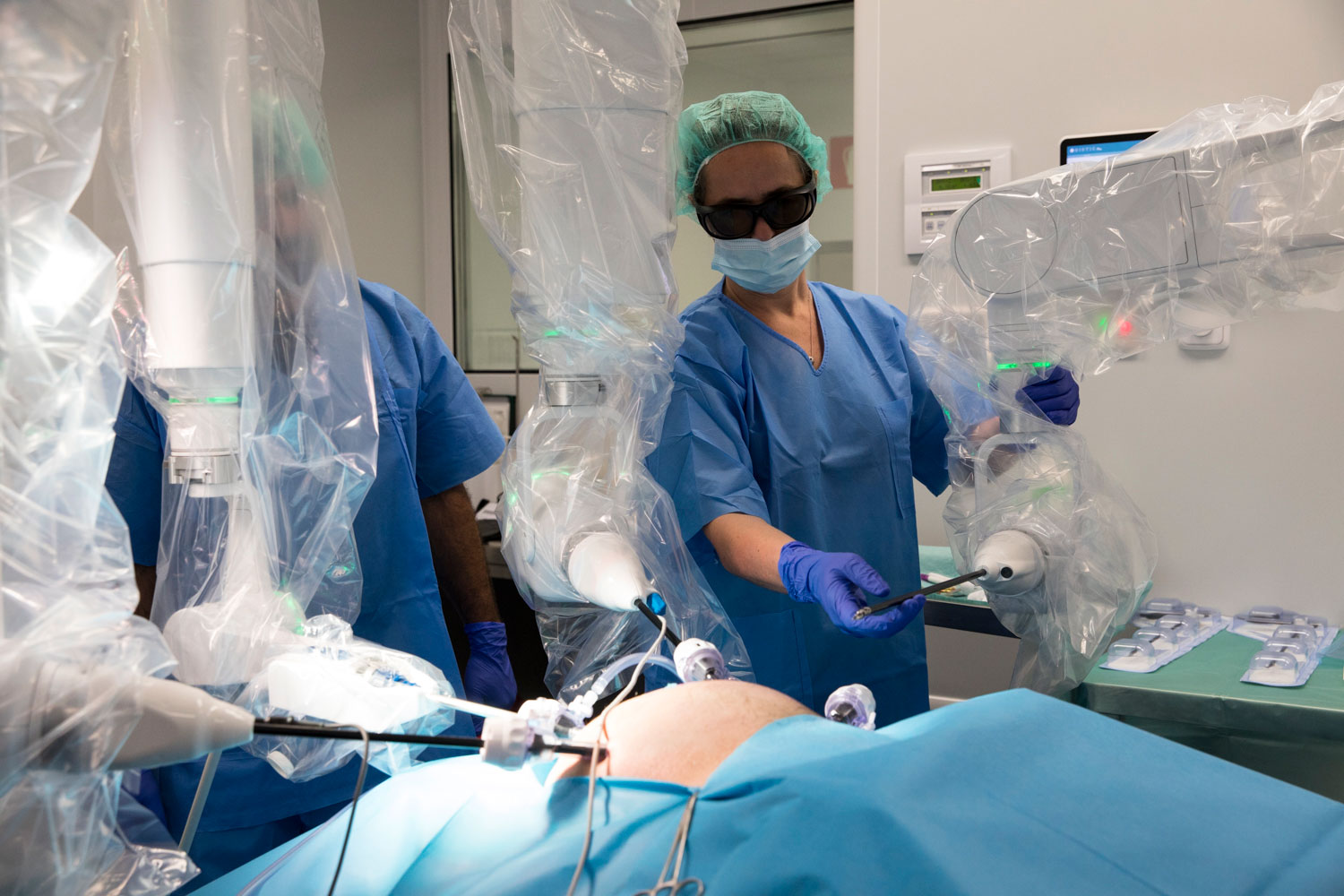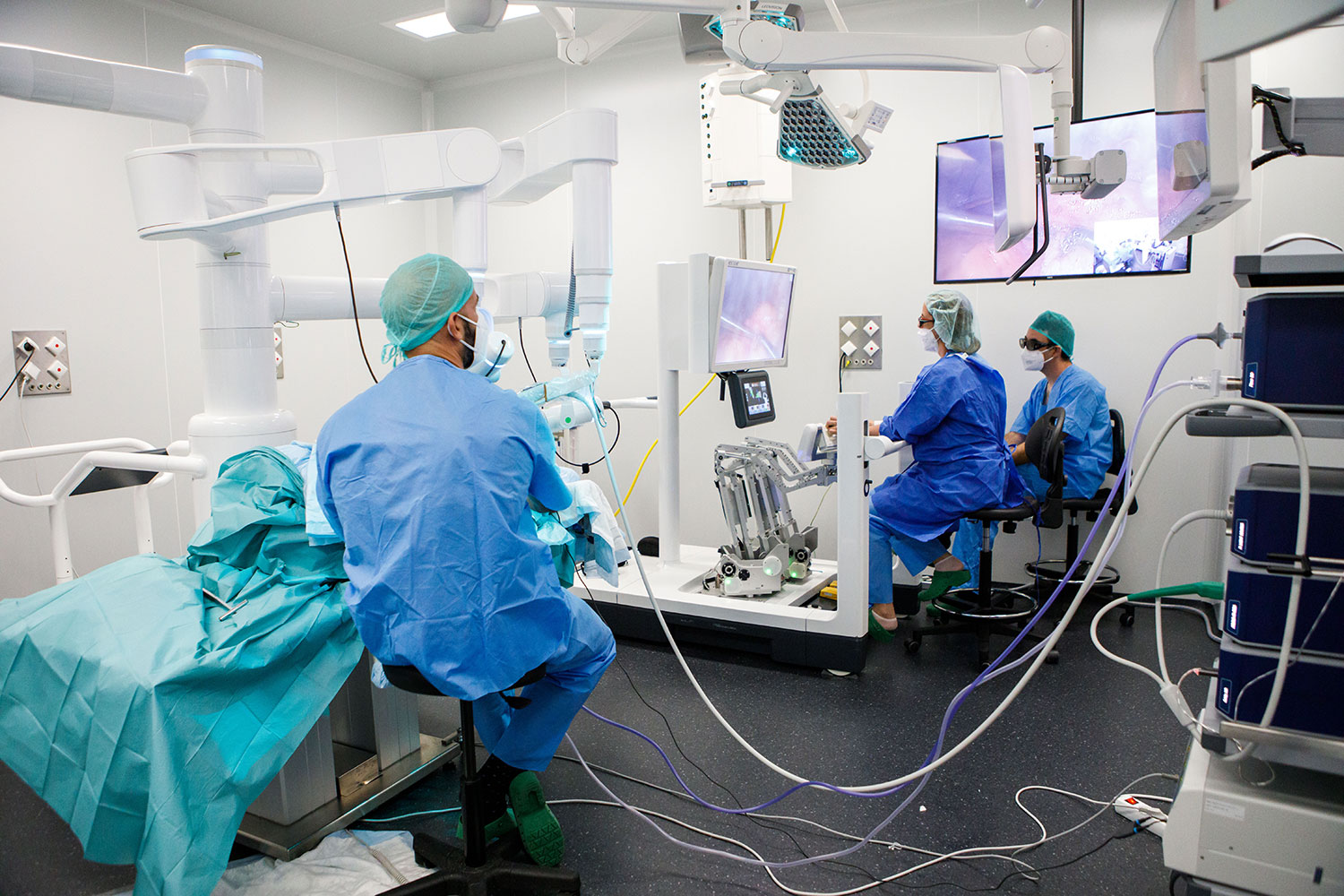
Faced with the challenge “how can we ensure that a greater number of patients benefit from robotic surgery?”, we have found the answer: by quickly and agilely transferring the Bitrack surgical robot. Its characteristics give it the ability to change operating rooms when it is no longer needed and start working on a new intervention in the same center or even in another hospital.
The open platform, disposable instruments, easy and quick docking, hybrid surgery… The Bitrack surgical robot is designed to improve the efficiency of current minimally invasive surgery. It has been manufactured thinking about benefiting patients and hospitals, but also all the medical staff present in the operating room: surgeons, nurses, assistants…
The design of the Bitrack system and its features allow professionals to carry out their work more agilely, easily and quickly. In the following video, we see how hybrid surgery and the ease of transport of the surgical robot make it possible for the robot to leave the operating room while the surgeon finishes the sutures after the intervention.
The Bitrack robot is very compact and manageable. Its small size makes it ideal for any type of hospital, with easy access through all doors and elevators.
The result of these advantages is clear: the time and cost per surgery is lower, the different operating room professionals can work comfortably and the robot can be easily transported to other areas of the hospital or even to other centers.



